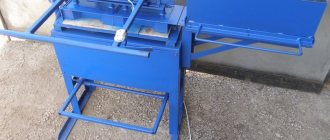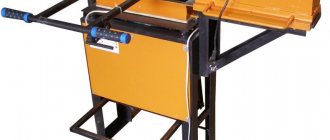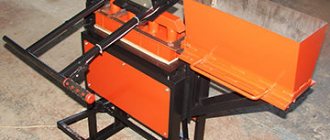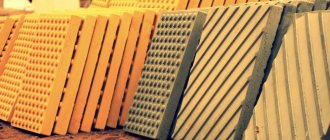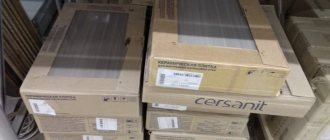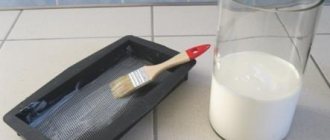Paving slabs laid in the yard, in a recreation area, on a personal plot or garden paths look attractive and stylish. But during operation, light and dark spots, moss, mold and other contaminants appear on the figured paving elements. It is almost impossible to avoid their appearance, so it is useful to know about all the ways and means by which you can quickly tidy up the coating and return it to its original cleanliness.
Cleaning paving slabs with a washing vacuum cleaner.
Types and classification of contaminants, methods and means for cleaning paving slabs
The porous surface of concrete pavement makes it vulnerable to contamination. Such a “fly in the ointment”, like deeply ingrained dust, can ruin all the beauty of the tile. At the same time, it is not always possible to remove old dirt with a broom or a stream of water. To successfully deal with stains from salt deposits, cement, rubber, paints, oils, rust, etc., you need to take into account their characteristics, concentration, and age. Cleaning agents and methods of caring for paving slabs also vary.
Ways and means to get rid of stains
1.Dry:
- sweeping with a brush, broom;
- mechanical cleaning with abrasives (grinding, scraping, etc.).
2.Wet:
- water (using a hose, special equipment - a high-pressure washer);
- chemical agents (solvents, alkalis, acids that affect the molecular structure of pollutants).
3.Thermal:
- hot steam softens the dirt;
- it is turned into ashes by fire, after which the dirt is easily cleaned out.
4. Cryogenic: freezing followed by hardening and removal mechanically.
Classification of pollution control methods
Cleaning with water.
All methods by which you can clean paving slabs from cement, various stains or efflorescence can be divided into 5 groups:
- Dry cleaning - sweeping with a broom, tag or brush.
- Wet cleaning - washing the area with a stream of water.
- Mechanical cleaning - removing stains with scrapers, a grinder, an electric drill, abrasive cloths.
- Dry cleaning - the use of household chemicals, solvents, acids, and special compounds.
- Use of materials with adsorbing properties (sand, sawdust).
Each of these methods will be effective in some cases and useless in others. Therefore, having visually determined the type of contamination, you need to use only those means and techniques that will help in this situation.
How to clean cement from paving slabs
After laying or updating the joints of the coating, it is almost impossible to avoid traces of cement mortar.
- Fresh cement stains on paving slabs can be washed off with a strong stream of water or salt (sprinkling the wet surface in an even layer and after 1-2 hours, picking up the already loosened dirt with a brush).
- Dried cement deposits are removed mechanically (grinder with a brush disk, electric drill with grinding attachments) or chemically: a dissolving agent (SYNTILOR Cementо, etc.) is applied for 10–20 minutes, then washed off with water.
How to clean paving stones
In some cases, it is enough to sweep away dust from the paving stones after laying or wash them with a hose. But sometimes it happens that stains from the tiles are not going to be washed off. Then you have to resort to other and more radical methods of how to clean paving slabs from cement. Typically, the appearance of this kind of severe pollution is preceded by the installation of curbs using cement mortar. Difficult to wash stains on paving stones include stains such as traces of machine oil, various adhesives, paints, tire marks, etc.
What is this article about?
Cleaning treatment options
Before removing unnecessary deposits and drops of mixtures from the road surface, you should find out the main ways to solve the problem. In addition, you will have to stock up on everything you need. What you will need for this:
- a set of different cleaning products (baking soda, salt, garden lime, ammonia, special cleaning agent);
- brush;
- protective suit;
- chisel and hammer;
- wire brush;
- sandpaper;
- sand;
- sealant.
The best option is when any trace of contamination on paving slabs can be eliminated immediately. If this is not possible, then all manipulations with frozen stains should be carried out with the utmost care so as not to cause even greater damage to the tiled road surface.
Mechanical method
The sequence of actions in this case comes down to repeating several basic steps. Somehow:
- Removing contaminants. There is no provision for the use of any cleaning products;
- Cleaning the surface from cement stains with a spatula or a sharp knife blade;
- Final cleansing. Take a metal brush and bring the surface to perfect condition.
If there are thin spots (up to a few millimeters thick), use typical coarse-grained sandpaper. This cleaning method is very labor-intensive. However, it is also the safest, guaranteeing the safety of the tile surface. With thicker stains they do it differently - use a chisel and hammer. However, a delicate approach is required when working with them.
So, how to clean the surface of paving stones with a hammer and chisel? If sprayed concrete cannot be removed so easily, you can use the option of tapping with a chisel on the most convex places. Light blows are applied to the central point of the tubercle. In the best case, the stain will burst and begin to move well away from the base. Another scenario is that the stain does not crack after being tapped with a chisel. Then resorting to repeated manipulation of the stain and the application of great physical effort does not make sense. Because you can overdo it, which will cause it not the concrete to burst, but the tile itself. Next, arm yourself with a wire brush and clean off the remaining cement from the paving slabs. Moreover, rubbing actions take place in all directions. Here you can try again to remove the stain with a chisel. Since stripping increases the chances of the stain coming off many times over.
After this, sanding is done with sandpaper or a grinding machine. These devices will help clear the paving stones to the level of the stone.
Anyone who has a non-rigid brush or grinder can try to eliminate cement splashes with them. You should operate the devices at a low intensity speed.
Method of chemical exposure
To give your paving slabs a fresher look, the cement can be washed off using chemicals. Trisodium phosphate, neutralizers, phosphoric acid or hydrogen chloride solution are suitable in this case.
In addition, to clean concrete that has not hardened too much, you can try using ordinary table salt. It will help get rid of cement coating. First, salt is poured onto the directly contaminated area, which has been moistened in advance. After some time, the structure of cement under the influence of salt will become more loose. Therefore, it can be easily cleaned with a stiff brush.
The next point is removing stains using special cleaning compounds. In this case, it is preferable to choose products for cleaning concrete tiles that contain phosphoric acid as one of the components. The first step is to conduct a small test of the behavior of any of the compositions on an inconspicuous piece of coating or on the remains of a tile. After all, it is not known how the reaction from the interaction of the product with the tile material will manifest itself. For example, the surface may become discolored or show signs of material corrosion.
Products such as ammonia, garden lime or baking soda can act as neutralizers for the excessive effects of phosphoric acid. In this case, use any one of the indicated means. It is highly not recommended to mix them. In addition, they never forget about the safe concentration of any of the drugs.
You can repeat the attempt to clean the stain with a special solution. In this case, the stains should begin to peel off. After allowing the acid composition to sit on the stain for a short time, take a brush and gently rub it on the desired area.
An excellent product for removing old concrete stains from tiles is the industrial product Barracuda 10k. This product contains a special synthetic acid that allows it to dissolve concrete better than other compounds. Moreover, this remedy can be used even in winter. It is expensive, but its price is justified by the effectiveness of its use. It can be diluted with water (it all depends on the degree of contamination and how old the stains are). After application to the tiles, it can be periodically wiped with a rag. Again, reasonable care should be taken when choosing the portion to apply. The effect can be so strong that it corrodes not only the cement on the tile, but also the cement that is in its composition.
Another powerful method is treating cement with hydrochloric acid (hydrogen chloride solution). For domestic use, an acid concentrate is used, adjusted in the ratio specified by the manufacturer. All manipulations for cleaning paving slabs involving hydrochloric acid are carried out exclusively in compliance with personal safety measures - wearing a protective suit, gloves, and goggles. The hydrogen chloride solution is applied to the contaminated areas and left alone until completely dry. Do not touch the acid-treated area with bare hands not protected by gloves. Since if hydrochloric acid comes into contact with unprotected skin, it is unlikely that it will be possible to cope without medical help.
After everything has been done to the surface of the paving slabs, a neutralizer is applied to it. When using it, you must strictly follow the recommendations given by the manufacturer on the packaging material. After treatment, the tiles are washed with water. Saving water is inappropriate here, since all chemicals must be thoroughly washed off the tiled surface.
Trisodium phosphate helps to cope well with the task of washing tiles. In addition, after this treatment, the tonality of the tile improves. After using the product, the paving surface is also thoroughly washed with water. This substance is strictly prohibited from being mixed with any other substance, since their reaction may ultimately be completely unexpected.
How to get rid of concrete stains
Fresh stains of the solution are washed off with water. Frozen small ones are removed with a spatula, then with an abrasive, and large ones can be carefully crushed with a hammer, electric drill or grinder so as not to damage the surface of the coating. For gentle cleaning, solvents are used (645, 646, 647, white spirit, acetone, etc.). 10–15 minutes after treating the surface, they are washed off with water, rubbed with sand, swept away and washed again with water.
Formation of salt deposits during operation
Solvent 647. If a white coating forms on the surface of the paths, it is recommended to use simple solvents such as white spirit and solvent 647 for initial cleaning. If these solutions do not help solve the cleaning problem, then use surface water rinses with chlorine-containing substances, such as “Whiteness” , "Belinka" or BiO Repair.
How to clean paint stains from paving slabs
Methods for removing paint stains with chemical agents are similar to those used for removing varnish. Solvents, various paint removers (Antikras, Spetsnaz, solutions of hydrochloric, orthophosphoric acid, etc.) are also applied to the tile fragment to be cleaned, left for the recommended time, and washed off with water. Next, grout with sand, then sweep away the abrasive. The surface is washed again with water.
Dried paint can also be removed mechanically - with a scraper or brush with a metal working surface.
How often should you clean?
There is no strictly regulated frequency of tile maintenance. This depends on many factors - the intensity of use of the coating, the care of the owners and their guests, the degree of improvement of the territory outside the site. Agree, if there is a dirt road leading to the house, then after the rain the dirt will end up in the yard anyway.
Paving design project from Sad-dizain
More details
We give an approximate frequency of work.
- There are two general cleanings. In the spring, when you need to remove all the dirt accumulated under the snow and the remains of reagents. And in the fall, they remove the leaves and sweep out the seams so that the tiles go into winter clean.
- The entrance area is cleaned 1-2 times a month, and if clods of dirt get on the paving along with the wheels, then more often.
- The front part of the yard is cleaned as needed.
- It is best to hose down garden paths every time you water your plants.
- Remove difficult stains (barbecue soot, rust, paint on paving stones) immediately. The more time passes, the more difficult it will be to get rid of them.
Unscheduled tile cleaning after a hurricane with heavy rain
Destruction of fungal formations and mold
Errors in the design of drainage, the location of the tile covering in lowlands are factors due to which the tile is exposed to conditions of high humidity for a long time. The result can be problems that are dangerous to human health, such as mildew or mold.
You can resist them by using cleaning products with concentrated chlorine. The surface of the paving stones must be treated with a solution diluted with water (1:10), left for up to 40 minutes, then rinsed with water.
It is easy to get rid of fungus or mold protruding on the surface using the freezing method (the affected tile, wrapped in cellophane, is placed in the freezer for a day, then the dirt is removed and the surface is disinfected with an antiseptic). In the fight for cleanliness - the guarantee of health - burning has also proven itself well, when mold and mildew spores die from prolonged heating. Then the soot from heating with a blowtorch or gas torch is washed off with soap and water.
Sticky foods and chewing gum
You can fight such enemies of the purity and beauty of paving slabs in the following way.
Using a knife (spatula, etc.), clean the surface from dried (or frozen with a piece of ice) chewing gum, sticky candies, etc. The chewing gum is removed by first melting it by heating. After this, the paving slabs are treated with acetone and kerosene. Traces of sticky products, such as lard, are removed with water and detergent, as well as alcohol.
Removing bitumen stains
Bitumen stains contain resins, which are dissolved with white spirit, acetone, diesel fuel and then washed off from the surface of the coating. Old stains will not withstand power tools with abrasive attachments, coarse sandpaper, or a rasp. They are also easy to simply cut or scrape off.
Machine oil, grease stains, antifreeze
You can remove such stains, for example from engine oil, by first sprinkling them with sand, caustic soda, or sawdust, which should absorb the fuel and lubricant. Later, the remaining dirt is washed off using a synthetic detergent. If necessary, use compositions that dissolve petroleum products (RAVELON, etc.).
Flushing away pet feces
These contaminants have a specific pungent odor, which can be difficult to get rid of.
- Fresh “traces” can simply be washed off with hot water and washing powder.
- Bleach or acid is effective in dissolving the waste products of animals and birds. After application, the solution must be removed within 30 minutes and the paving slabs washed with water.
- Dried dirt is scraped off with a spatula, knife and removed with a hard bristle brush.
- Excrement frozen in the cold is crushed with a shovel, hammer, hoe and other similar tools. The blows are applied in the center, doing this carefully so as not to damage the tile. The fragments are then scraped off and disposed of.
Cement
The most difficult contamination. When we consider how to clean paving slabs after laying, we almost always mean cement. In some cases, it is actually impossible to wash off the substance; no amount of water or detergents will remove it. It’s worth trying not to wash it, but to carefully chop it off, take a chisel and a hammer. Tap the center of the cement stain with a chisel, there is a chance that it will chip off nicely, neatly, evenly. You can take a not very aggressive sandpaper and try to remove the dirt with it.
If you are considering how to clean paving slabs from cement dust, and not from spilled cement, or if cement stains simply cannot be removed, you will have to resort to chemicals. They prefer products that contain phosphoric acid; it is the most effective for combating cement stains. Doesn't something like this help? Hydrochloric acid is used.
It should be used only in exceptional cases when all other methods do not help. It is very strong, and it is simply contraindicated to use it without protective clothing. If a substance gets on your skin, you should not simply ignore this fact; it is critically important to immediately consult your doctor to avoid undesirable consequences. Hydrochloric acid is applied to the area that needs to be cleaned and distributed evenly over it. Wait until it dries. When it dries, you should try to remove the dirt, this time everything should come out.
Those who have laid their garden plots with paving slabs are faced with the question of how to wash the surface. A paved area without proper care will lose its beautiful appearance, as it becomes covered and impregnated with various contaminants. It’s not easy to protect tiles from dirt, but cleaning them regularly won’t be difficult. The main thing is to follow the recommendations and do it correctly without causing harm to the coating.
How to remove moss from paving slabs
It can be difficult to remove moss from tiles: the moisture-loving plant “occupies” not only the surface, but also the pores of the coating. If you do not fight this scourge, over time the entire tile may turn green. A slippery path with an unaesthetic appearance is not at all what pedestrians or owners of a country house need.
Moss can be removed mechanically using a spatula, knife, or scraper. But without chemical treatment, the spores again settle on the surface of the paving stones. Solutions containing chlorine will cope with this task. At the same time, care must be taken to protect plants growing nearby.
Removing fuel stains
The easiest way to clean up engine oil, spilled fuel or grease is to sprinkle it with loose adsorbent (sawdust, sand, soda ash), and after absorption, sweep it away with a brush or broom. If you do this immediately after the liquid gets on the tile, not a trace will remain of the fuel and lubricants.
If you delay cleaning, then after a few hours the oil, gasoline or diesel fuel will be so absorbed into the pores of the concrete that only special degreasing solutions for removing oils and petroleum products can remove them:
- Antex 2;
- Oil Killer;
- DOCKER MAZBIT TURBO;
- Prima Supra;
- Bremsen-reinieger.
Motor oil or diesel fuel can be removed using improvised means:
- Clean with acetone or gasoline, and burn off the residue with a blowtorch.
- Treat with alkaline-based dishwashing detergents.
- Wash the pavers with hot soapy water.
Spilled fuels and lubricants spread and are absorbed not only into the structure of the tiles, but also into the seams between the tiles. Since it is impossible to clean a sandy surface, the oiled sand must be removed and clean material poured in its place.
Cleaning from glue, sealant, foam
The dried glue is crushed with a chisel, hammer or grinder, after which the surface must be rubbed with sandpaper and cleaned. Grinding or chemical treatment is also used. In the latter case, active chemicals soften (or dissolve) the old glue. After treatment with a solvent based on trisodium phosphate, phosphoric acid (Deterdek, etc.), the remaining dirt is removed mechanically, then the surface of the paving stones is washed with water.
The polyurethane foam is scraped off the surface with a knife or spatula, and the remains are dissolved with a chemical agent.
About safety and environment
When working with acids, chlorine and alkaline cleaning solutions, do not forget about your own health and safety. Such work is carried out using rubber gloves and a respirator. It is advisable to have safety glasses. After all, a flying drop, even with a small amount of acid, getting into the eye, can seriously damage it.
Before cleaning paving slabs with chemicals, consider the environment. It may happen that after cleaning the paving stones with chemicals, the grass on the adjacent lawn will turn yellow, and the beautiful flowers in the flower bed will wither. Therefore, give preference to mechanical cleaning methods, and use chemicals only as a last resort.
Removing rubber after a car slips
As a result of such force majeure, dull black marks remain on the paving slabs.
Washing paving slabs with hot water, a strong detergent and a stiff brush will get rid of such stains. Remaining dirt must be collected without rubbing it into the porous surface of the concrete pavement. And with the help of a steam generator, the rubber will become liquid and can be easily wiped off the tile. You can treat it with a solvent, degrease it and remove any remaining dirt.
What to do if the tiles become dull after cleaning
Such paving cladding can be “reanimated” by first cleaning the tiles and applying one of the following products:
- acid dye that restores damaged color and gloss of the surface (etches it to a depth of 1 cm);
- rubber paint, which forms a protective layer that will temporarily extend the service life, improve the appearance of the coating and enhance anti-slip properties.
We try folk remedies for cleaning paving slabs until they shine
Traditional methods of getting rid of stains are often not inferior to modern ones in terms of results. In addition, they are usually environmentally friendly and harmless.
- Fresh contamination from food products (oily, sticky, starchy), fuels and lubricants can be easily removed with folk remedies.
- Soda, salt: cover the stain. When absorbed, wash off with soap and water.
- Soda, bite: pour vinegar (9%) over the coating fragment sprinkled with soda. After an alkaline reaction, wash off with soap and water.
- Plaster with the addition of washing powder (a pinch of detergent per 0.5 cup of plaster): knead and apply to the fragment to be cleaned. After hardening, remove along with the dirt.
- Citric or acetic acids diluted with water (1:10) get rid of salt deposits and fungus.
- Lemon juice dissolves rust stains in 5-15 minutes.
- Table vinegar disinfects and neutralizes unpleasant odors, for example, when removing animal feces.



